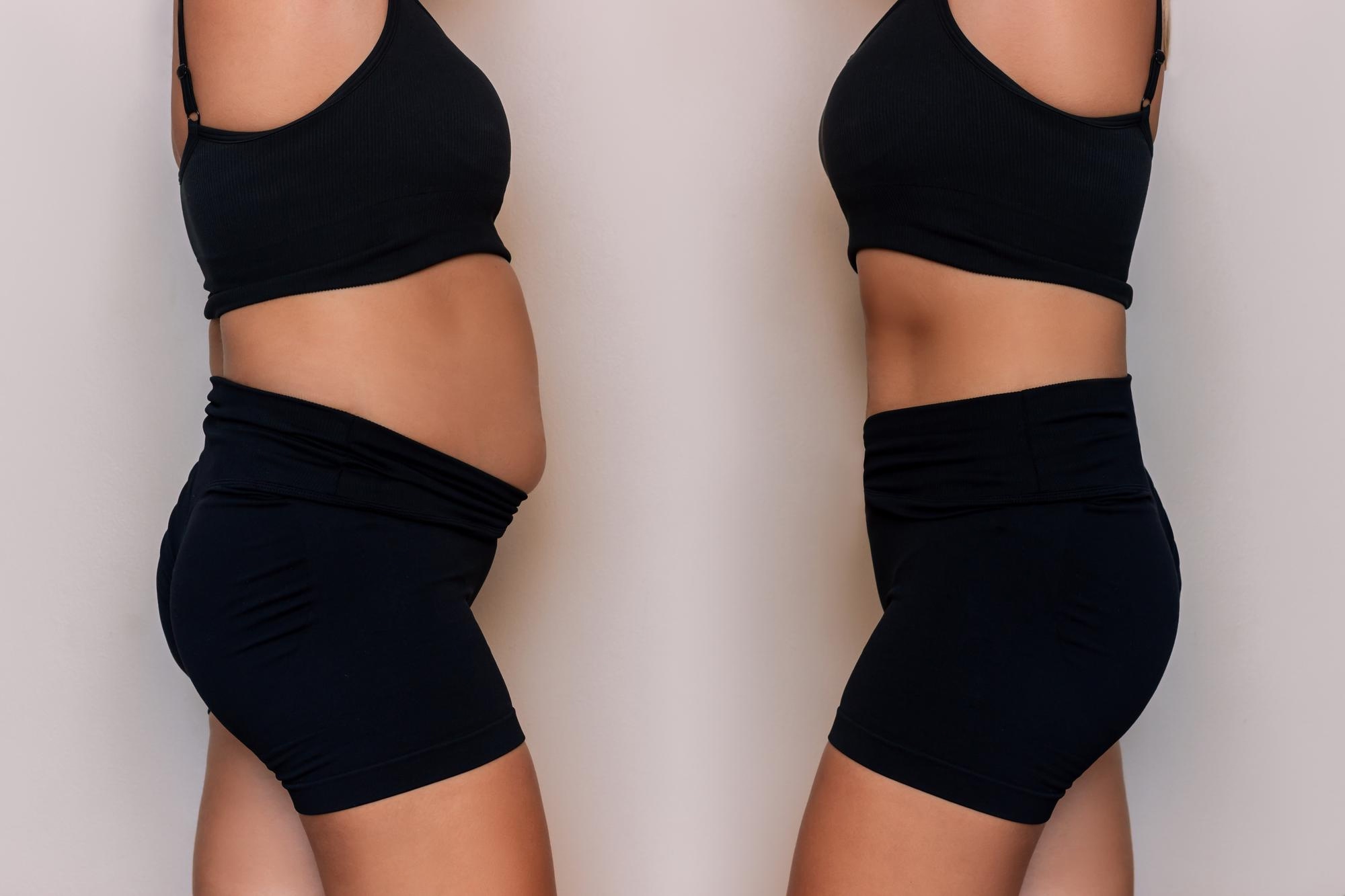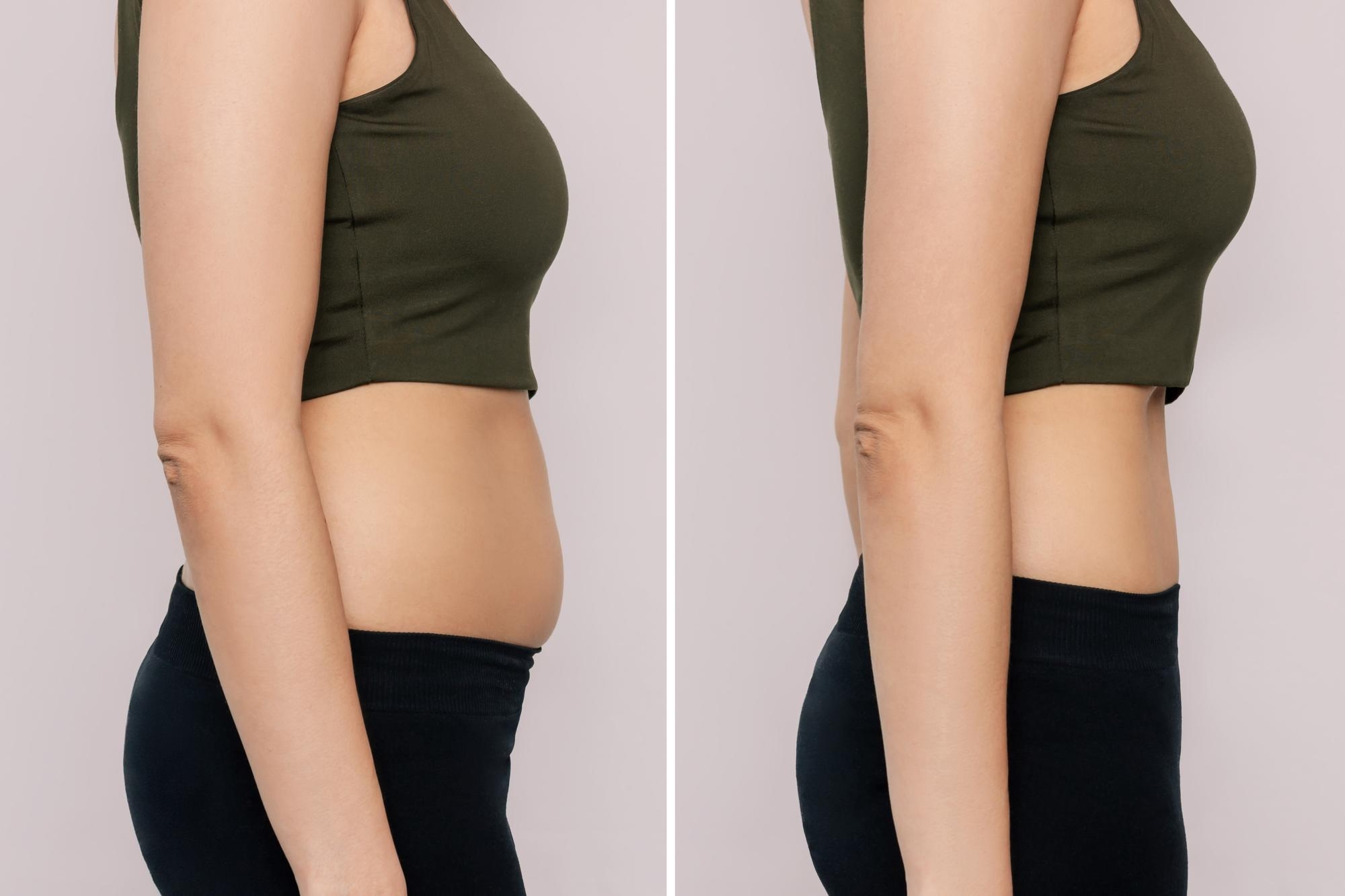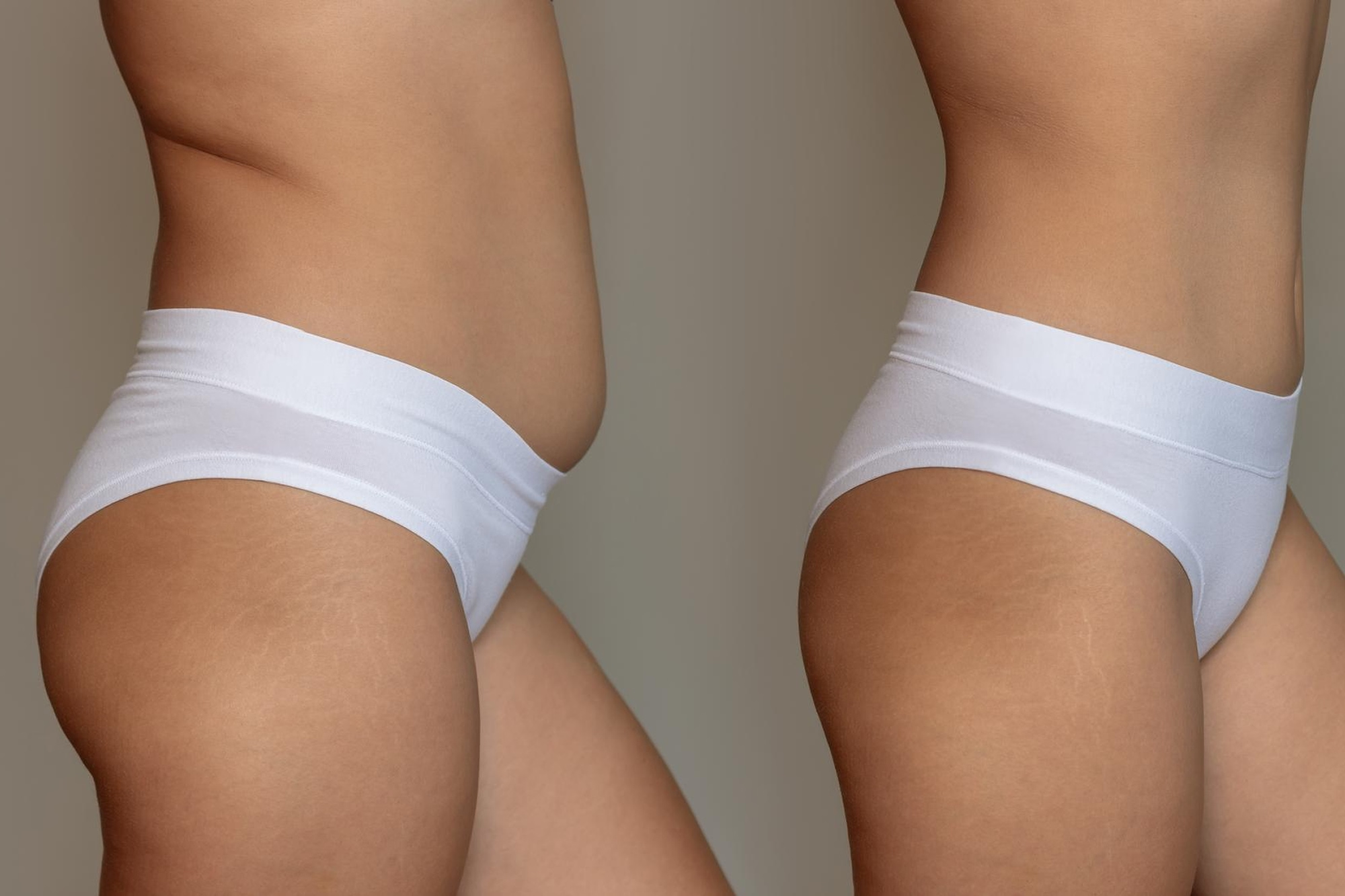Tummy Tuck (Abdominoplasty)
These procedures are customised to address specific problems of abdominal contour, and deal specifically with combinations of excess skin, fatty deposits and midline muscle separation. It covers a spectrum of surgeries ranging from liposuction only, to liposuction + mini tummy-tuck, to full tummy tuck / abdominoplasty. Liposuction is generally reserved for younger patients with elastic skin and moderate fatty deposits. In addition, good abdominal muscle tone is important to ensure a good liposuction result.
MINI TUMMY TUCK
A mini-tummy tuck is performed when problems of excess skin and muscle weakness are restricted to the lower abdomen (below the belly button). This may be the case following pregnancy. This operation is generally done under spinal anaesthetic, as a day case, and initially involves liposuction of the entire tummy area.
READ MORE
Then a variable amount of lower abdominal skin is removed, exposing the muscles, which are then tightened from the belly button down towards the pubis. This gives a very favourable contour to the lower abdomen, and adds longevity to the result. The belly button is not moved in this operation. Most caesarian section scars are removed , although you will be left with a lower abdominal scar somewhat longer than a caesarian scar (but this is well hidden in a bikini)
FULL TUMMY TUCK
A full tummy tuck is done when there is muscle weakness along the full length of the abdomen (from breast bone to pubis), and there is a significant degree of skin excess. In the traditional full tummy tuck, a large area of tummy skin is undermined. All the skin and fat between the belly button and pubic region is removed, the muscles are then tightened from breast bone to pubis, and finally the skin is closed, and belly button repositioned.
READ MORE
A long lower abdominal scar will be present, as will a scar within the belly button. Numerous studies have shown that combining liposuction of the central abdomen during a traditional full tummy tuck may compromise the circulation, and hence is generally avoided, although flank liposuction is considered to be safe.
More recently (2009), a modification of the traditional full tuck was described, and termed a “lipo-abdominoplasty”. This procedure allows for comprehensive liposuction of the abdomen along with a modified / lesser degree of undermining of the tummy flap, but a full repair of the tummy muscles. The indications for a lipo-abdominoplasty are exactly the same as for a traditional full tummy tuck / abdominoplasty. The essential components of this procedure are full abdominal liposuction, elevation of the tummy flap at a more superficial level and in a more limited area, full muscle repair and belly button repositioning. I have done a number of these procedures, and it is now my full tummy tuck procedure of choice! I have also noted easier closure of the tummy, seemingly less discomfort post op, no fluid collections (thus far) and I only leave a drain in place for one night, as opposed to the one week with the traditional surgery previously. That said, it is still a big procedure, takes somewhat longer to perform (due to the concomitant liposuction) and the overall look is similar, although adding the liposuction at the time of the tuck generally negates the need for a possible secondary liposuction in the future. Just to stress that this is not a procedure for significantly overweight patients – your BMI must be below 30 to be considered a suitable candidate in my practice. . This is a major operation, done under spinal anaesthesia, and will require a 1.5 day hospital stay. Complications are fortunately rare, but can be potentially serious, and so patient selection is important. Generalised obesity, cigarette smoking, previous venous thrombosis or poor general health are some contra-indications to a full tummy tuck.
FINAL WORDS
All the above procedures are designed to give the patient an improved abdominal contour, and greater confidence in clothing and swim-wear. Good patient and procedure selection, and a thorough understanding of all the risks and benefits of the various options, should ensure a favourable outcome.
Tummy Tuck Before And After



Your Comfort and Confidence Matter.
Taking the step to explore surgical options is personal. Dr. Paul Skoll provides a caring and professional environment to discuss your goals for a smoother abdomen.
A few commonly asked questions
What are the primary benefits of a tummy tuck (abdominoplasty)?
A tummy tuck offers several benefits, including a flatter and firmer abdomen, removal of excess skin and fat, tightening of weakened or separated abdominal muscles (diastasis recti), reduction of stretch marks below the belly button, and an improved overall body contour. Many patients experience increased confidence and comfort in clothing.
Who is generally a good candidate for a tummy tuck?
Ideal candidates for a tummy tuck are typically individuals who are in good overall health, at a stable weight, and bothered by excess skin and fat in the abdominal area that hasn’t responded well to diet and exercise. Common reasons include changes after pregnancy, significant weight loss, or the natural aging process. It’s important to have realistic expectations about the outcome.
What is the difference between a full tummy tuck, a mini tummy tuck, and a circumferential tummy tuck?
Full Tummy Tuck: Addresses the entire abdomen, from the rib cage to the pubic bone. It typically involves tightening abdominal muscles, removing significant excess skin and fat, and repositioning the belly button.
Mini Tummy Tuck: Focuses on the area below the belly button. It involves a smaller incision and is suitable for patients with excess skin and fat primarily in the lower abdomen and may not involve belly button repositioning.
Circumferential Tummy Tuck (Body Lift): Addresses excess skin and fat around the entire torso, including the abdomen, flanks, and lower back. It involves a longer incision encircling the body.
Dr. Skoll will determine the most appropriate type of tummy tuck based on your individual anatomy and goals.
What kind of scarring can I expect after a tummy tuck?
The extent and location of scarring depend on the type of tummy tuck performed. A full tummy tuck typically results in a horizontal scar across the lower abdomen, usually placed low enough to be concealed by most underwear and swimwear. There will also be a scar around the repositioned belly button. Mini tummy tucks have a shorter scar in the lower abdomen. Circumferential tummy tucks have a longer scar encircling the torso. Dr. Skoll will discuss the expected scar placement and provide detailed post-operative care instructions to minimize scarring.
How long is the recovery period after a tummy tuck?
The initial recovery period typically lasts 2-4 weeks. You’ll experience swelling, bruising, and discomfort, which can be managed with medication. It’s important to avoid strenuous activity, heavy lifting, and prolonged standing for several weeks. Most patients can return to light daily activities within a few weeks, but full recovery may take several months. Dr. Skoll will provide detailed post-operative guidelines.
Will a tummy tuck help me lose weight?
A tummy tuck is not a weight loss procedure. It is designed to improve the shape and contour of the abdomen by removing excess skin and fat and tightening muscles. While you may lose a small amount of weight due to the removal of tissue, it’s essential to be at a stable weight before undergoing a tummy tuck to achieve the best and most long-lasting results.
Can a tummy tuck get rid of stretch marks?
A tummy tuck can remove stretch marks that are located on the excess skin being excised, most commonly those below the belly button. Stretch marks above the belly button may be improved in appearance due to the skin tightening but will not be completely eliminated.
What are the potential risks and complications of a tummy tuck?
As with any surgical procedure, a tummy tuck carries potential risks, including infection, bleeding, blood clots, poor wound healing, scarring, changes in skin sensation, fluid accumulation (seroma), and anesthesia-related complications. Dr. Skoll will discuss these risks in detail during your consultation and take all necessary precautions to minimize them.
What is the average cost of tummy tuck in South Africa?
The cost of a tummy tuck in South Africa is not a fixed price, as it depends on several factors, including the type of procedure (full, mini, or extended), the inclusion of liposuction, the surgeon’s fee, the anaesthetist’s fee, and hospital costs.
For a detailed and transparent quotation tailored to your specific needs, the best step is to schedule a personal consultation. During this confidential meeting, we will assess your case and provide a comprehensive breakdown of all costs.
Have More Questions?
Learn more about My Procedures
